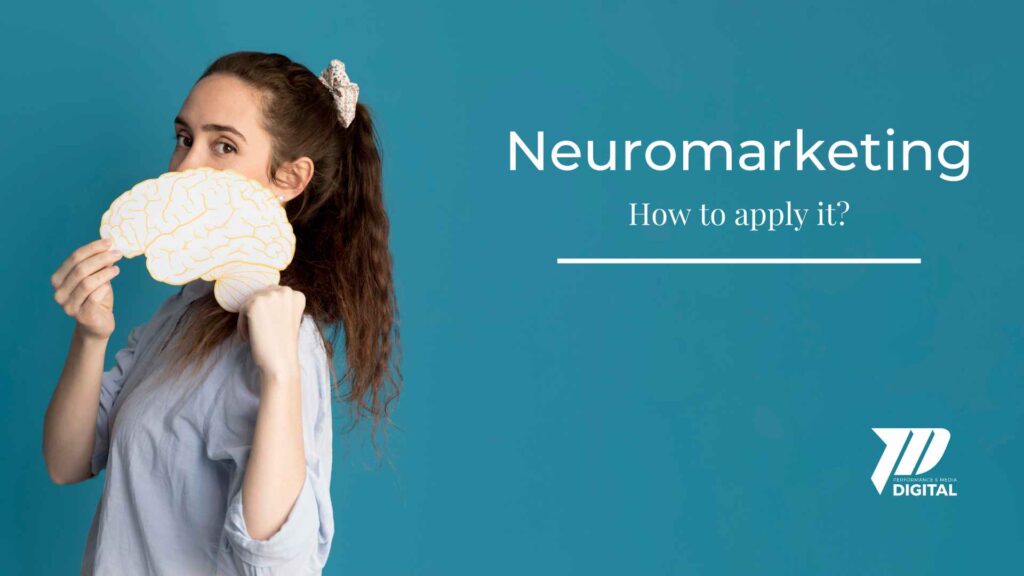For any business, it would be ideal to know first-hand what goes through consumers’ minds when deciding whether to buy your product.
This is why the marketing and communication strategy has emerged as a tool for companies to convince customers that this product or service is what they really need.
This strategy is highly applicable to optimize the brand image. That is why we have prepared this blog to talk to you about what neuromarketing is and how to apply it.
What is sensory marketing?
Sensory marketing is based on behavioral and emotional actions that speed up the decision to buy a product or purchase a service by stimulating the five senses (sight, hearing, smell, taste, and touch).
This strategy can take various forms, all with the aim of establishing an exclusive and immersive sensory experience for the consumer, making him associate the positive values he perceives with the brand.
From this experience for the senses, we try to evoke emotions, memories and even awaken the imagination; in this way, the brand has a positive impact, with which it can strengthen ties and become unforgettable for the consumer’s mind.
Neuromarketing. What is it?
Neuromarketing is structured to understand how the consumer’s mental processes work; it is also known as cognitive science or consumer science, since it allows identifying the genesis of emotions and purchasing decisions, through the study of brain functioning.
However, neuromarketing is not a science per se; it simply interprets, in a focused and intelligent way, the scientific precepts about the brain’s response to various stimuli.
Therefore, it is possible to understand complex brain processes and determine what is the best marketing strategy that you can apply in your business, to anticipate and provide solutions that meet the demands of that potential customer.
Undoubtedly, neuromarketing is the art of selling to the brain and the senses, and seeks fundamentally the point where it can create value, both for the consumer and for the company; helping the former to better understand its environment, to make the most relevant decision for him.
More and more businesses are betting on this trend, since they want to have the best tools at hand, those that make them able to convince more and efficiently, which translates into an increase in sales and conversions, and in turn into a higher ROI for the organization.
You may be interested in: What is relationship marketing?
Types of Neuromarketing
Our 5 senses are the main receptors that transmit the external information received, to the brain, they are key pieces within this strategy. From here, we can define the three essential types of neuromarketing:
Visual
Stimulus through visuals is fundamental for the human being. According to some studies, the brain has the capacity to retain 80% of what it sees, only 20% of what it reads and only 10% of what it hears.
With this in mind, visual neuromarketing investigates how all the fragments that make up an image impact the consumer’s perception.
Elements such as the type of image, colors, relief, shape or size are aspects that influence the consumer when deciding on one option or another, and knowing these preferences allows us to design a product, message or service that is closer to what the consumer wants.
Color is positioned as a primordial element that directly influences the consumer; each shade provides a different emotion or sensation. So, in a summarized way, we can detail what sensation can generate some colors with which we are familiar:
- Yellow: evokes vitality, joy, optimism.
- Red: is synonymous with love, passion, energy, and action.
- Blue: gives the feeling of calm, security, honesty, and confidence.
- Green: related to the natural, it inspires harmony, relaxation, and care.
Auditory
A good piece of music or a chorus that hits everywhere is more effective than a million-dollar marketing campaign.
Although it is true that the auditory stimulus, for many, is less important than the visual one, it is necessary to consider that both can complement each other and make the marketing campaign look more professional and successful.
A good example of auditory neuromarketing can be seen in the music played in clothing or department stores; there, both the style of music and the volume are linked to achieving an objective: to attract a particular audience and encourage a quick purchase.
Read: Technology innovation
Kinesthetic
This focuses on understanding how sensory stimuli work, through touch, smell, and taste of the consumer, seeking to establish the different ways to attract customers and influence them to accelerate the decision-making process.
Have you ever walked by a bakery and been enveloped by the wonderful smell of freshly baked bread? That’s an excellent kinesthetic neuromarketing strategy, which puts the scales in your favor, and will likely help your sales increase.
In short, Neuromarketing is not about conducting studies, tests, and analyses of the human brain and what is the real origin of its behavior when stimulated. On a practical level, it turns out to be a marketing strategy with great potential to increase performance and sales in an organization.
If you are looking to improve your brand or increase sales, at Pym Digital we offer you the best digital advertising strategies, as well as our Digital Marketing, SEO, Social Media Management, Growth Hacking, Web Design, and more.
Contact us and schedule your appointment!





